Verona Italy – Verona Italia
- Maria Scuor
- Feb 10, 2024
- 20 min read
Italiano in ogni sezione
City of love - Città dell'Amore

Verona, about 2 ½ hours away from Arona is located in the Veneto region of Northern Italy and is the largest city municipality in the region as well as one of the seven capitals. The city has a population of about 257,000 however the metropolitan area has over 714,000. I didn’t realize it was this big. Thanks to William Shakespeare for setting his masterpiece Romeo and Juliet in Verona, it is also known as the “City of Love”.
Like most cities in Italy, Verona is full of history and has been ruled by the Gauls, Romans, Goths, Austrian and Germans until noble families like the della Scala and Visconti ruled for some time. Between 1508 and 1517, the city was in the power of Emperor Maximillian I and there were numerous outbreaks of the plague. In 1629 – 1633, Italy was hit with its worst outbreak and Verona lost over 33,000 people, which was 60% of the population.
In the late 1700s the city was under Napoleon, then the Austrians took control. This happened a few times in history until 1866 when Verona finally became part of the Kingdom of Italy.
Verona, a circa 2 ore e mezza da Arona, si trova nella regione Veneto del Nord Italia ed è il comune più grande della regione, nonché uno dei sette capoluoghi. La città ha una popolazione di circa 257.000 abitanti, ma l'area metropolitana ne ha oltre 714.000. Non mi rendevo conto che fosse così grande. Grazie a William Shakespeare per aver ambientato il suo capolavoro Romeo e Giulietta a Verona, è conosciuta anche come la "Città dell'Amore".
Come la maggior parte delle città italiane, Verona è ricca di storia ed è stata governata dai Galli, dai Romani, dai Goti, dagli Austriaci e dai Germani fino a quando famiglie nobili come i della Scala e i Visconti hanno governato per qualche tempo. Tra il 1508 e il 1517 la città fu in potere dell'imperatore Massimiliano I e ci furono numerose epidemie di peste. Tra il 1629 e il 1633, l'Italia fu colpita dalla sua peggiore epidemia e Verona perse oltre 33.000 persone, pari al 60% della popolazione.
Alla fine del 1700 la città era sotto Napoleone, poi gli austriaci ne presero il controllo. Questo accadde poche volte nella storia fino al 1866 quando Verona entrò finalmente a far parte del Regno d'Italia.
We had a very busy day trying to fit in all the sights we wanted to see and thankfully we had a hotel right in the centre of town and easy access to all them. First stop was the Verona Cathedral or Duomo di Verona. It is a complex with:
Cathedral – This is a Roman Catholic cathedral that was consecrated in 1187 after two churches on the same site were destroyed in the 1117 earthquake. Built in Romanesque style, the façade is divided in three parts and has Gothic windows. The bell tower was never finished and is missing the cusp. Once inside, you can’t help but be in awe of the grandeur and beauty. It has a nave with two aisles, rose-coloured marble columns and many frescoes. Gothic windows beautify the church and when you gaze up at the high, arched ceilings you can admire the Renaissance details of the roof.
Abbiamo avuto una giornata molto impegnativa cercando di inserire tutti i luoghi che volevamo vedere e per fortuna avevamo un hotel proprio nel centro della città e un facile accesso a tutti. La prima tappa è stata il Duomo di Verona. Si tratta di un complesso con:
Cattedrale - Questa è una cattedrale cattolica romana che è stata consacrata nel 1187 dopo che due chiese sullo stesso sito sono state distrutte nel terremoto del 1117. Costruita in stile romanico, la facciata è divisa in tre parti e presenta finestre gotiche. Il campanile non fu mai terminato e manca la cuspide. Una volta dentro, non si può fare a meno di rimanere a bocca aperta di fronte alla grandezza e alla bellezza. Ha una navata a tre navate, colonne di marmo rosato e molti affreschi. Le finestre gotiche abbelliscono la chiesa e quando si alzano gli occhi verso gli alti soffitti ad arco si possono ammirare i dettagli rinascimentali del tetto.
Here is a TikTok video and photos of outside and inside the cathedral - Ecco un video di TikTok e foto dell'esterno e dell'interno della cattedrale

St. Helen Church – The covered walkway to get to the church has foundations and columns from previous builds and is beautiful to walk through to get to the church. Built at the end of the 8th century St. Helen church sits on the foundations of a previous church that was heavily damaged by an earthquake and rebuilt in 1140. Both external and internal are of Romanesque style. The main chapel has the 16th century altarpiece of the Madonna, child and Saints Giorgio, Elena, Stefano and Zeno. The graves in the floor are a testimony to burying the dead, which was customary until the early Middle Ages.
Chiesa di Sant'Elena – La passerella coperta per arrivare alla chiesa ha fondamenta e colonne di costruzioni precedenti ed è bella da percorrere per arrivare alla chiesa. Costruita alla fine dell'VIII secolo, la chiesa di Sant'Elena sorge sulle fondamenta di una precedente chiesa che fu pesantemente danneggiata da un terremoto e ricostruita nel 1140. Sia l'esterno che l'interno sono in stile romanico. La cappella maggiore conserva la pala cinquecentesca raffigurante la Madonna col Bambino e i Santi Giorgio, Elena, Stefano e Zeno. Le tombe nel pavimento testimoniano la sepoltura dei defunti, che era consuetudine fino all'Alto Medioevo.
Here are photos of St. Helen Church - Ecco le foto della Chiesa di Sant’Elena
Baptistery – Also known as the Church of San Giovanni in Fonte was built in the Lombard era but completely rebuilt in 1123. For many years now, it has been used as a baptistery for the Cathedral. It has many frescoes that date back to the 14th century and the famous 12th-century baptismal font with reliefs depicting Jesus’ life and was carved from a single block of marble. Its octagonal shape is symbolic as the number eight refers to the eighth day, which ends the earthly week and leads to eternity. The eighth day also indicates the first day after the Sabbath: Resurrection Sunday.
Battistero – Conosciuta anche come Chiesa di San Giovanni in Fonte fu costruita in epoca longobarda ma completamente ricostruita nel 1123. Da molti anni è utilizzato come battistero per la Cattedrale. Ha molti affreschi che risalgono al XIV secolo e il famoso fonte battesimale del XII secolo con rilievi raffiguranti la vita di Gesù ed è stato scolpito da un unico blocco di marmo. La sua forma ottagonale è simbolica in quanto il numero otto si riferisce all'ottavo giorno, che conclude la settimana terrena e conduce all'eternità. L'ottavo giorno indica anche il primo giorno dopo il sabato: la domenica di resurrezione.
Here are photos of the Baptistery - Ecco le foto dello Battistero
There are so many sights to see in Italy and here is a TikTok video and some photos - Ci sono così tanti luoghi da vedere in Italia ed ecco un video di TikTok e alcune foto
Starbucks
We stayed at Residenza Borsari for a night and if you are in Verona this is a great hotel to stay at. Beautiful, clean and located in the heart of the city. There even is a Starbucks a two-minute walk away. For me this was a bonus as I got to have a couple of caramel lattes. This Starbucks opened was only the 20th in Italy when it opened in September 2022. It seats 90 inside and has 40 outdoor seats as well. The décor is very modern and the atmosphere is calming.
Abbiamo soggiornato alla Residenza Borsari per una notte e se siete a Verona questo è un ottimo hotel in cui soggiornare. Bello, pulito e situato nel cuore della città. C'è anche uno Starbucks a due minuti a piedi. Per me questo è stato un vantaggio perché ho avuto modo di avere un paio di Caramel Latte. Questo Starbucks aperto era solo il 20° in Italia quando ha aperto nel settembre 2022. Ha 90 posti a sedere all'interno e dispone anche di 40 posti a sedere all'aperto. L'arredamento è molto moderno e l'atmosfera è rilassante.
Here are some photos of Starbucks - Ecco alcune foto di Starbucks.
Scaligar Arks - Arche Scaligere
Walking into the historic centre in Piazza Arche Scaligeri, you can’t help but be in awe of the Gothic style funerary complex of the Scaligeri family. Located in the cemetery of the Church of Santa Maria Antica, it became the burial place of all branches of the family. The first buried was Mastino I della Scala in 1277. However, his and five other lords only have sarcophagus’ and not the grandeur of the three arks (tombs) located on this site:
Ark of Cangrande has the most famous of the lords Can Francesco della Scale also knows as Cangrande. He died in 1329 and this tomb was placed a year later
Ark of Mastino II has Italian leader Mastino II’s tomb. He was known for further expanding the holdings of Verona. He also financed the renovations of the cemetery as he wanted it to be an elegant Gothic complex to glorify the Scala family. In 1364 he commissioned sculptor Bonino da Campione to build his monumental tomb. Mastino II died in 1375
Ark of Cansignorio entombs Lord Cansignorio della Scala and has Gothic pillars on each corner, six warrior saints can be seen all around the ark and six columns support the red marble surface where the lord’s sarcophagus is located. He died in 1375 as well.
Passeggiando nel centro storico in Piazza Arche Scaligeri, non si può fare a meno di rimanere a bocca aperta di fronte al complesso funerario in stile gotico della famiglia Scaligeri. Situato nel cimitero della Chiesa di Santa Maria Antica, divenne il luogo di sepoltura di tutti i rami della famiglia. Il primo sepolto fu Mastino I della Scala nel 1277. Tuttavia, il suo e altri cinque signori hanno solo il sarcofago e non la grandiosità delle tre arche (tombe) situate in questo sito:
L'Arca di Cangrande ospita il più famoso dei signori Can Francesco della Scala, detto anche Cangrande. Morì nel 1329 e questa tomba fu collocata un anno dopo
L'Arca di Mastino II ospita la tomba del condottiero italiano Mastino II. Era noto per aver ulteriormente ampliato i possedimenti di Verona. Finanziò anche i lavori di ristrutturazione del cimitero in quanto lo volle come un elegante complesso gotico per glorificare la famiglia Scala. Nel 1364 commissionò allo scultore Bonino da Campione la costruzione della sua tomba monumentale. Mastino II morì nel 1375
L'Arca di Cansignorio seppellisce il Signore Cansignorio della Scala e ha colonne gotiche su ogni angolo, sei santi guerrieri possono essere visti tutt'intorno all'arca e sei colonne sostengono la superficie di marmo rosso dove si trova il sarcofago del signore. Morì anch'egli nel 1375.
Here are some photos of Scaligar Arks - Ecco alcune foto di Arche Scaligere
Juliet’s House – Casa di Giulietta
Lovers from all over the world come to visit Juliet’s house in Verona, making it the cities most famous place. The building is not far from Piazza Erbe, however you do have to wait in line to visit the courtyard, and while you go through the passageway, there are notes, signatures and locks symbolling love.
“The Tragical History of Romeus and Juliet” is a poem written in 1562 by Authur Brooke and based on an Italian tale written by Matteo Bandello. It was William Shakespeare who expanded on both these versions and used a poetic dramatic structure to switch from comedy to tragedy. Believed to have been written between 1591 – 1595, Romeo and Juliet has been adapted numerous times for stage, musicals, film and opera venues.
This play is about a romance between two Italian youths from rival families that ends in tragedy and is Shakespear’s most popular play. The play is set in Verona with the families of Montague and Capulet as sworn enemies (these families existed in Verona). The house and balcony become famous because it was where Romeo met Juliet on that fateful night.
The “real” house dates back to the 13th century and was owned by the Capello family, and their coat of arms is carved on the inner courtyard. The medieval-house was restored by Antonio Avena in mid-1930s and is now a museum that for a fee you can visit it. There is a brass statue of Juliet in the courtyard and it is believed that if you tough her right breast, it brings you good luck. The original, made in 1969 by Nereo Constantini was moved inside the house due to conservation conditions and in 2014 a copy was placed in the courtyard.
Innamorati da tutto il mondo vengono a visitare la casa di Giulietta a Verona, rendendola il luogo più famoso della città. L'edificio non è lontano da Piazza Erbe, ma bisogna fare la fila per visitare il cortile, e mentre si attraversa il corridoio, ci sono biglietti, firme e lucchetti che simboleggiano l'amore.
"La tragica storia di Romeo e Giulietta" è un poema scritto nel 1562 da Authur Brooke e basato su un racconto italiano scritto da Matteo Bandello. Fu William Shakespeare che ampliò entrambe queste versioni e utilizzò una struttura drammatica poetica per passare dalla commedia alla tragedia. Si ritiene che sia stato scritto tra il 1591 e il 1595, Romeo e Giulietta è stato adattato numerose volte per teatri, musical, cinema e teatri d'opera.
Questa commedia parla di una storia d'amore tra due giovani italiani provenienti da famiglie rivali che finisce in tragedia ed è l'opera più popolare di Shakespeare. L'opera è ambientata a Verona con le famiglie di Montecchi e Capuleti come nemici giurati (queste famiglie esistevano a Verona). La casa e il balcone divennero famosi perché fu il luogo in cui Romeo incontrò Giulietta in quella fatidica notte.
La casa "vera" risale al XIII secolo ed era di proprietà della famiglia Capello, il cui stemma è scolpito sul cortile interno. La casa medievale è stata restaurata da Antonio Avena a metà degli anni '30 ed è oggi un museo che a pagamento è possibile visitare. C'è una statua in ottone di Giulietta nel cortile e si crede che se le si stringe il seno destro, si porta fortuna. L'originale, realizzato nel 1969 da Nereo Constantini, è stato spostato all'interno della casa per motivi di conservazione e nel 2014 una copia è stata collocata nel cortile.
We didn’t visit the museum as the lineup was very long. But we did get to see the balcony and take a few pictures. Non abbiamo visitato il museo perché la fila era molto lunga. Ma siamo riusciti a vedere il balcone e scattare alcune foto.
Here are some photos of Juliet’s House - Ecco alcune foto della Casa di Giulietta
Piazza della Erbe and Torre dei Lamberti
Piazza dell Erbe or Piazza Erbe is the oldest square in Verona and for some 2000 years has maintained its original function as the city’s market, just as it did in Roman times. It is located exactly in the center of the city and is surrounded by centuries-old buildings, towers, houses and noble buildings. In the center of the piazza stands the fountain with the statue known as “Madonna Verona” which was created in the 14th century.
We really enjoyed walking the market, taking in the scenery, people watching and going up the Lamberti Tower to see the scenery from the tower. You can walk up the 368 steps or take an elevator. Construction began in 1172 on the order of the mysterious Lamberti family, it was built in Romanesque style and stood at 37m (121 ft) high. In 1295, two Rengo bells which summoned city council, calling up to arms and the Marangona bell which signalled work hours were added to the tower.
In May 1403, lightening struck the tower and caused the top of the tower to collapse. Reconstruction began in 1448 and it wasn’t until 1463 that reconstruction was completed. The tower stood at 84m (275 feet) and was/is the tallest building in Verona. In 1798 the clock was added at the expense of Count Giovanni Sagramoso.
Piazza delle Erbe o Piazza Erbe è la piazza più antica di Verona e da circa 2000 anni mantiene la sua funzione originaria di mercato cittadino, proprio come ai tempi dei romani. Si trova esattamente nel centro della città ed è circondata da palazzi secolari, torri, case e palazzi nobiliari. Al centro della piazza si erge la fontana con la statua conosciuta come "Madonna Verona" che fu creata nel XIV secolo.
Ci è piaciuto molto passeggiare per il mercato, ammirare il paesaggio, osservare la gente e salire sulla Torre dei Lamberti per vedere il paesaggio dalla torre. Puoi salire i 368 gradini a piedi o prendere l’ascensore. La costruzione iniziò nel 1172 per ordine della misteriosa famiglia Lamberti, fu costruita in stile romanico e si ergeva a 37 m (121 piedi) di altezza. Nel 1295 furono aggiunte alla torre due campane Rengo, che convocavano il consiglio comunale chiamando alle armi, e la campana Marangona che segnalava le ore di lavoro.
Nel maggio del 1403, un fulmine colpì la torre e causò il crollo della sommità della torre. La ricostruzione iniziò nel 1448 e fu solo nel 1463 che la ricostruzione fu completata. La torre era alta 84 metri (275 piedi) ed era/è l'edificio più alto di Verona. Nel 1798 l'orologio fu aggiunto a spese del conte Giovanni Sagramoso.
Here are some photos of Piazze Erbe and Torre dei Lamberti - Ecco alcune foto di Piazze Erbe e della Torre dei Lamberti
Castelvecchio and Castel Vecchio Bridge – Castelvecchio e Ponte di Castelvecchio
Originally called the castle of San Martino in Aquaro, Castelvecchio is a medieval fort located in the historic center of Verona and is now used as the civic museum. Prince Cangrande II della Scala built the fortress between 1354 and 1357 but he decided to leave in mid-14th century as the city was not safe due to various wars. In the Napoleonic era the fort was used as an arsenal.
By the 20th century, Castelvecchio was restored and adapted into a museum and opened to the public in 1923. During the Second World War it was damaged by bombing and it wasn’t until 1964 that it was restored to the original configuration. Castelvecchio has become a distinctive tourist attraction and walking on the beautiful bridge over the river Adige is a magical experience.
Castel Vecchio Bridge or also known as Scaliger Bridge is a fortified bridge over the Adige River. Built by Cangrande II della Scala around 1356 as a safe escape from his castle. Because of its solid foundation the bridge remained unchanged until the 18th century when the French troops destroyed to tower on the left bank. However, on April 24, 1945 the German troops totally destroyed the bridge.
Architect Libero Cecchini reconstructed and completed the bridge in 1951, except for the left tower. The bridge is of red brick on the top part and white marble on the bottom part. There are three spans with the largest span being 48.7 m (160 ft) and total length of 120 m (393 ft)
Originariamente chiamato castello di San Martino in Aquaro, Castelvecchio è un fortilizio medievale situato nel centro storico di Verona ed è oggi adibito a museo civico. Il principe Cangrande II della Scala costruì la fortezza tra il 1354 e il 1357 ma decise di andarsene a metà del XIV secolo in quanto la città non era sicura a causa di varie guerre. In epoca napoleonica il forte fu adibito ad arsenale.
Nel XX secolo, Castelvecchio fu restaurato e adattato a museo e aperto al pubblico nel 1923. Durante la seconda guerra mondiale fu danneggiato dai bombardamenti e solo nel 1964 fu riportato alla configurazione originaria. Castelvecchio è diventata una caratteristica attrazione turistica e passeggiare sul bellissimo ponte sul fiume Adige è un'esperienza magica.
Il Ponte di Castel Vecchio o anche conosciuto come Ponte Scaligero è un ponte fortificato sul fiume Adige. Costruito da Cangrande II della Scala intorno al 1356 come rifugio sicuro dal suo castello. A causa delle sue solide fondamenta, il ponte rimase invariato fino al XVIII secolo, quando le truppe francesi lo distrussero fino a torreggiare sulla riva sinistra. Tuttavia, il 24 aprile 1945 le truppe tedesche distrussero completamente il ponte.
L'architetto Libero Cecchini ricostruì e completò il ponte nel 1951, ad eccezione della torre sinistra. Il ponte è di mattoni rossi nella parte superiore e di marmo bianco nella parte inferiore. Ci sono tre campate con la campata più grande di 48,7 m e una lunghezza totale di 120 m.
Here are some photos of Castelveccho and Castel Vecchio Bridge - Ecco alcune foto di Castelveccho e del Ponte di Castel Vecchio
Victory Bridge - Ponte della Vittoria
To commemorate the Victory of the battle of Vittorio Veneto of November 4, 1918 as well as to remember the fallen Veronese, the council of Verona decided to build a bridge and dedicate it the Victory bridge. Work began in 1926 and the inauguration ceremony was held on November 4, 1929. It wasn’t until 1931 that the pedestals with four equestrian statues and the plaques of the war bulletins were completed.
On the day the Castel Vecchio bridge was destroyed by German troops, Victory bridge was blown up by them as well. After the Second World War, reconstruction began and in 1953 the bridge was open to the public. The bridge is made of reinforced concrete and covered with stone. The bridge length is 111 m (364 ft) and it has three arches, the central one being 35 m (115 ft) and two smaller lateral ones being 32 m (105 m). The arches have a polycentric geometry to raise the mass of the bridge as much as possible and facilitate the passage of water in case of flood, also facilitated by the two holes placed in axis with the two sturdy piers.
Per commemorare la Vittoria della battaglia di Vittorio Veneto del 4 novembre 1918 e per ricordare i caduti veronesi, il comune di Verona decise di costruire un ponte e dedicargli il ponte della Vittoria. I lavori iniziarono nel 1926 e la cerimonia di inaugurazione si tenne il 4 novembre 1929. Solo nel 1931 furono completati i piedistalli con quattro statue equestri e le targhe dei bollettini di guerra.
Il giorno in cui il ponte di Castel Vecchio fu distrutto dalle truppe tedesche, anche il ponte della Vittoria fu fatto saltare in aria. Dopo la seconda guerra mondiale iniziò la ricostruzione e nel 1953 il ponte fu aperto al pubblico. Il ponte è realizzato in cemento armato e rivestito in pietra. La lunghezza del ponte è di 111 m e ha tre archi, quello centrale di 35 m e due laterali più piccoli di 32 m. Le arcate hanno una geometria policentrica per innalzare il più possibile la massa del ponte e facilitare il passaggio dell'acqua in caso di piena, agevolato anche dai due fori posti in asse con i due robusti pilastri.
Here is Victory Bridge - Ecco Ponte della Vittoria

Pietra Bridge and San Pietro Castle - Ponte Pietra e Castello San Pietro
Ponte Pietra is the oldest bridge in Verona and crosses the Adige River. It survived several floods and was destroyed during World War II by retreating German soldiers. It is the only remaining bridge from the Roman era as it was rebuilt by recomposing the stones recovered from the riverbed.
The crossing began with a wooden bridge in 148 BC and was replaced with a stone one in 89 BC. Over the centuries the bridge had added arches, but flooding continued to destroy the bridge. In 1503 there was an intervention to repair the arches, however during construction the bridge partially collapsed and the bridge was restored in wood. The bridge suffered the most damage on April 24, 1945, like the other bridges when German troops withdrew.
It was decided to rebuild the bridge by reusing as much of the original material recovered from the riverbed as possible. It consists of Roman, Venetian and medieval components. It was then reconstructed on the basis of extensive graphic and photographic documentation. Using different construction methods adopted at different times, the work was completed on March 3, 1959.
The current bridge is 92.8 m long and includes sidewalks. It has five arches of different lengths. Two arches date back to Roman times, the right shoulder with the tower and the adjacent arch are from the Middle Ages, and the two remaining arches with the large central tondo are from the Venetian era. It's a stunningly beautiful bridge with even more stunning scenery, including the stunning St. Stone Castle.
Ponte Pietra è il ponte più antico di Verona e attraversa il fiume Adige. Sopravvisse a diverse inondazioni e fu distrutto durante la seconda guerra mondiale dai soldati tedeschi in ritirata. E' l'unico ponte rimasto dell'epoca romana in quanto quando fu ricostruito ricomponendo le pietre recuperate dal letto del fiume.
L'attraversamento iniziò con un ponte di legno nel 148 a.C. e fu sostituito con uno di pietra nell'89 a.C. Nel corso dei secoli il ponte ha avuto archi aggiunti, ma le inondazioni hanno continuato a distruggere il ponte. Nel 1503 ci fu un intervento per riparare le arcate, tuttavia durante la costruzione il ponte crollò parzialmente e il ponte fu restaurato in legno. Il ponte subì i danni maggiori il 24 aprile 1945, come gli altri ponti quando le truppe tedesche si ritirarono.
Si decise di ricostruire il ponte riutilizzando quanto più possibile del materiale originale recuperato dal letto del fiume. Costituito da componenti romane, veneziane e medievali. E' stato poi ricostruito sulla base dell'ampia documentazione grafica e fotografica. Utilizzando diversi metodi costruttivi adottati in epoche diverse, i lavori furono completati il 3 marzo 1959.
L'attuale ponte è lungo 92,8 m e comprende marciapiedi. Ha cinque arcate di diversa lunghezza. Due arcate risalgono all'epoca romana, la spalla destra con la torre e l'arco adiacente sono di epoca medievale, e le due arcate rimanenti con il grande tondo centrale sono di epoca veneziana. Si tratta di un ponte incredibilmente bello con uno scenario ancora più sorprendente, tra cui lo splendido Castello di San Pietra.
We didn’t get to see San Pietra Castle but here is a TikTok video and photos of the area - Non siamo riusciti a vedere il Castello di San Pietra, ma ecco un video TikTok e le foto della zona

Piazza Bra & Verona Arena – Piazza Bra e Arena di Verona
Walking around Piazza Bra, the largest square in Verona allows us to understand why it is the heartbeat of Verona. Nestled within the gates, it is the epicenter for life and culture. It has medieval and modern architecture and hosts many restaurants, bars and cafes. It is an amazing place to sit for a coffee and people-watch because the impressive grandeur of this square leaves everyone awe stricken. The historic past and modern vibrancy, creates an experience that lasts forever. I could walk for days looking at this incredible piazza.
The Verona Arena is a Roman amphitheatre in Piazza Bra and when gaze upon it you can’t help but be in awe, it is a spectacular building. Gianni and I were lucky to have watched Eros Ramazzotti’s “Noi Tour” live in the arena in 2013. The acoustical experience was the best musical experience we have ever had the pleasure to listen too. If you are ever in Verona during concert season, you should really try to watch one.
Built around 30 AD, it was used for large-scale Ludi performances (Religious festivals). It is one of the best-preserved amphitheaters of its time and in ancient times it held about 30,000 people. Now with the placement of a stage it holds about 22,000 people. The original round façade was composed of pink limestone but the earthquake of 1117 destroyed the outer ring. After the fire of 1172, the arenas material was used to build other buildings.
Many centuries the building was used for different events such as: gladiator battles, public games and tournaments, hosted prostitutes in the 1300s, used as homeless shelter, storage facility, markets, bull fighting, circuses and concentration camps. It became Verona’s first shopping center in the 1700s that had people selling their crafts. By the 19th century there was horse riding and cycling competitions, tombola draws (raffle draws) and the first opera was performed in 1856. It wasn’t until 1913 that the Veronese amphitheater became the largest open-air opera theatre in the world. The need to preserve the environment for these performances and protect the dignity of the building was saved.
The theatre has hosted many musical events such as Festivalbar, Power Hits Estate and numerous music concerts featuring Italian and foreign artists. One of our favourite Italian singer, Zucchero Fornaciari holds the record for fourteen consecutive shows.
Passeggiare per Piazza Bra, la piazza più grande di Verona, ci permette di capire perché è il cuore pulsante di Verona. Incastonato all'interno dei cancelli, è l'epicentro della vita e della cultura. Ha un'architettura medievale e moderna e ospita molti ristoranti, bar e cafè. È un posto fantastico per sedersi per un caffè e osservare la gente perché l'impressionante grandezza di questa piazza lascia tutti a bocca aperta. Il passato storico e la vivacità moderna, creano un'esperienza che dura per sempre. Potrei camminare per giorni guardando questa incredibile piazza.
L'Arena di Verona è un anfiteatro romano in Piazza Bra e quando lo si guarda non si può fare a meno di rimanere a bocca aperta, è un edificio spettacolare. Io e Gianni abbiamo avuto la fortuna di vedare dal vivo Eros Ramazzotti nel 2013. L'esperienza acustica è stata la migliore esperienza musicale che abbiamo mai avuto il piacere di ascoltare. Se vi capita di trovarvi a Verona durante la stagione dei concerti, dovreste assolutamente provare a vederne uno.
Costruito intorno al 30 d.C., è stato usato per spettacoli Ludi (feste religiose) su larga scala. È uno degli anfiteatri meglio conservati del suo tempo e nell'antichità ospitava circa 30.000 persone. Ora, con il posizionamento di un palco, può contenere circa 22.000 persone. L'originale facciata rotonda era composta da calcare rosa, ma il terremoto del 1117 distrusse l'anello esterno. Dopo l'incendio del 1172, il materiale delle arene fu utilizzato per costruire altri edifici.
Per molti secoli l'edificio è stato utilizzato per diverse manifestazioni quali: combattimenti di gladiatori, giochi e tornei pubblici, ha ospitato prostitute nel 1300, utilizzato come ricovero per i senzatetto, deposito, mercati, corride, circhi e campi di concentramento. È diventato il primo centro commerciale di Verona nel 1700 che aveva persone che vendevano i loro prodotti artigianali. Nel 19 ° secolo c'erano gare di equitazione e ciclismo, estrazioni di tombola e la prima opera fu eseguita nel 1856. Fu solo nel 1913 che l'anfiteatro veronese divenne il più grande teatro lirico all'aperto del mondo. È stata salvata la necessità di preservare l'ambiente per questi spettacoli e proteggere la dignità dell'edificio.
Il teatro oggi ha ospitato numerosi eventi musicali come Festivalbar, Power Hits Estate e numerosi concerti musicali con artisti italiani e stranieri. Uno dei nostri cantanti italiani preferiti, Zucchero Fornaciari detiene il record di quattordici spettacoli consecutive.
Here is a TikTok video and photos of Piazza Bra and Verona Arena - Ecco un video TikTok e le foto di Piazza Bra e dell'Arena di Verona











































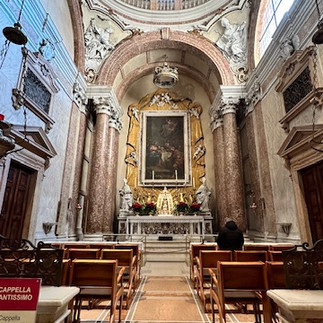
































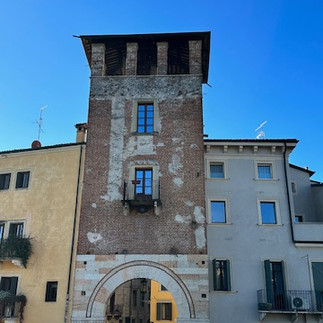

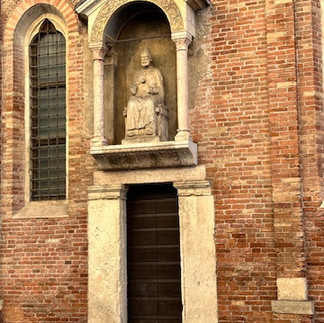

















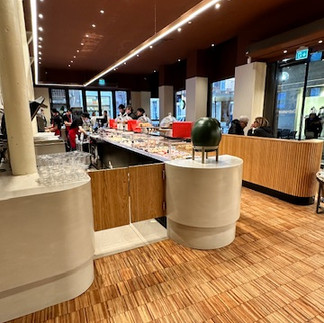
























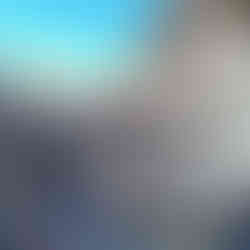



































































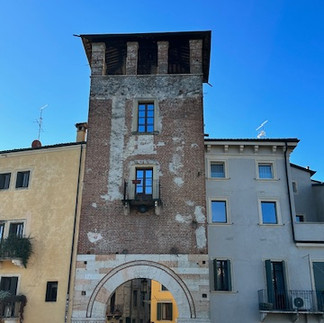


































Comments